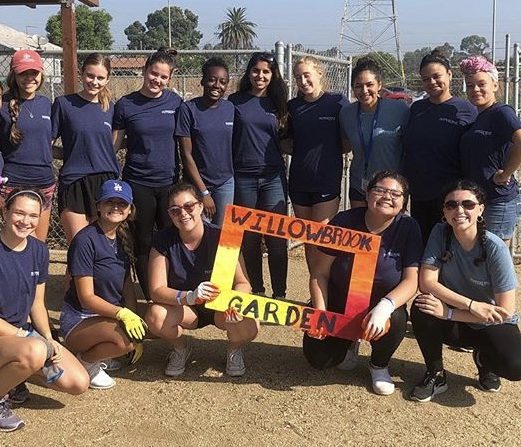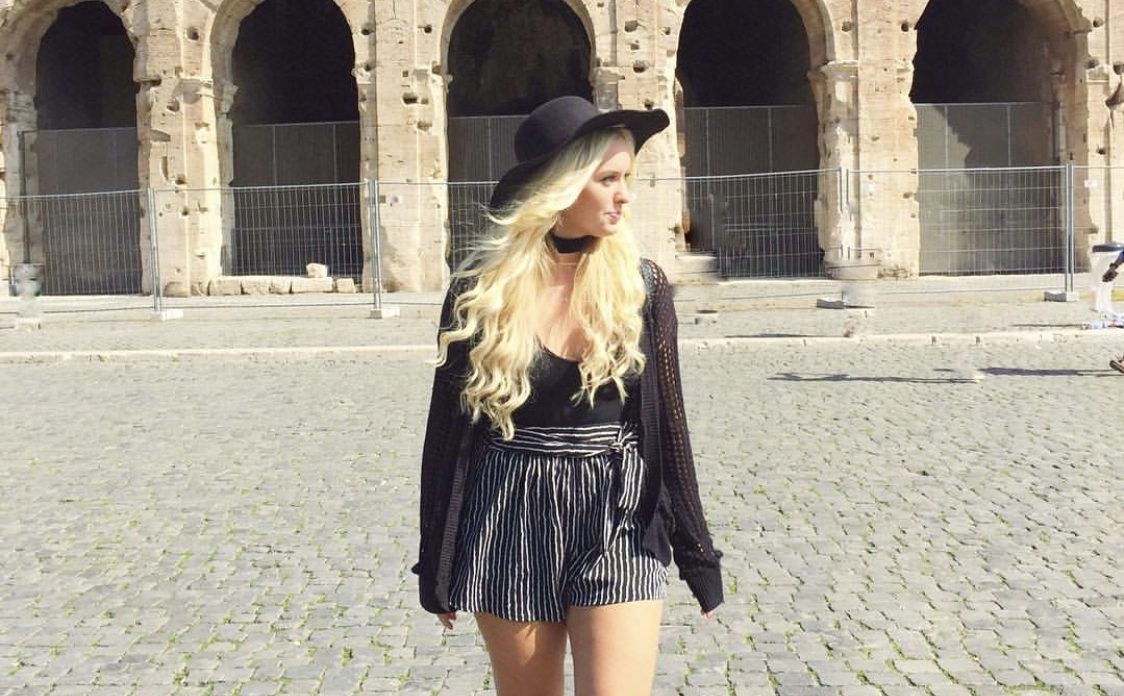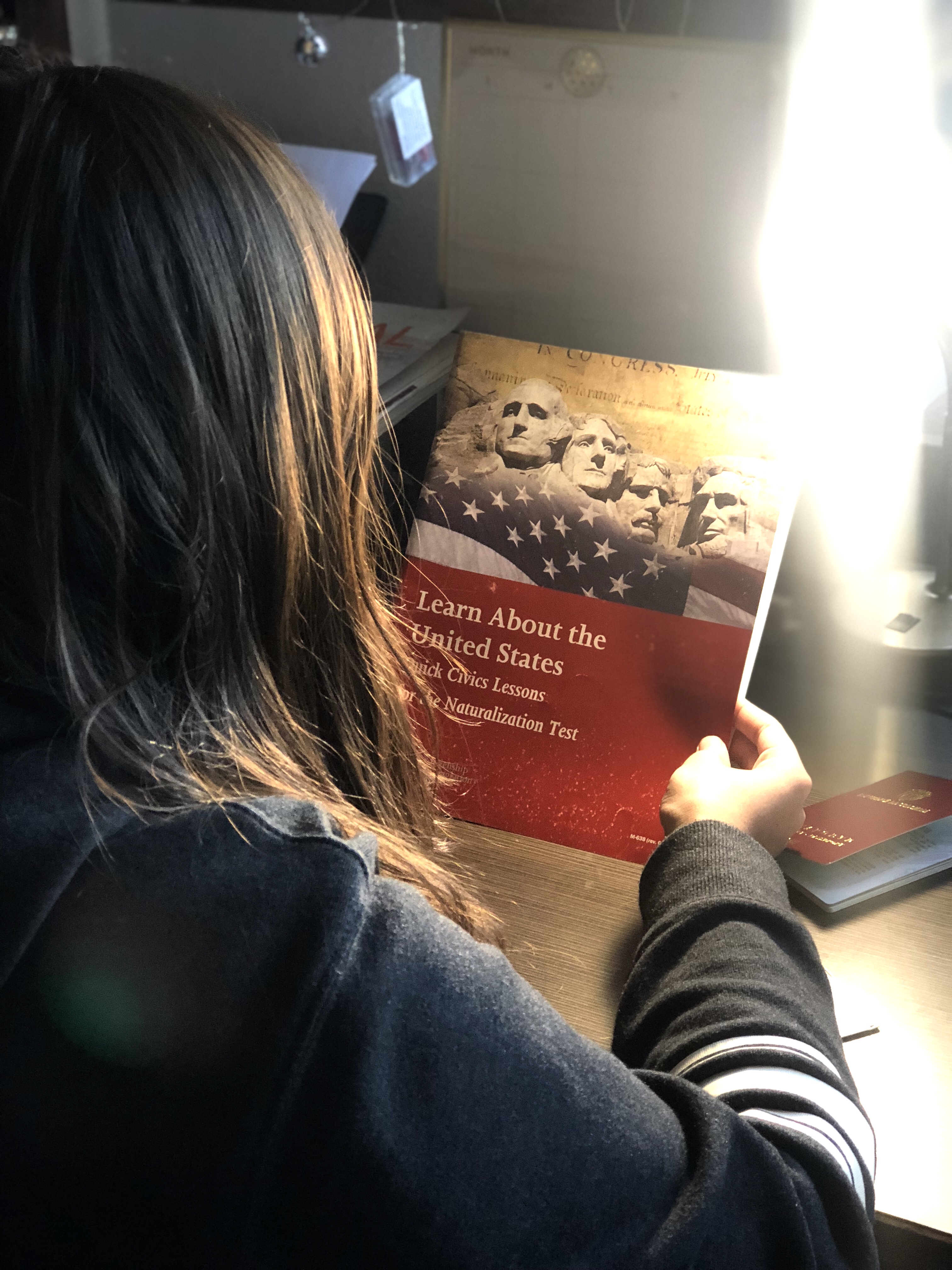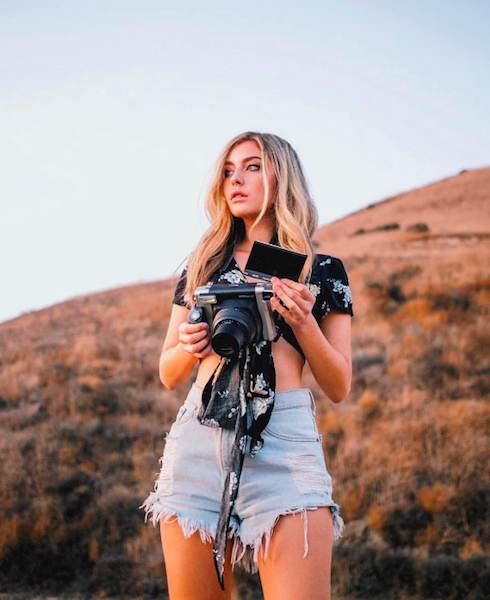
Most college students spend more time than they should scrolling through Instagram each day. But some Pepperdine students have figured out how to turn that time into money.
As personal branding has become a staple in American society, marketing teams are now hiring social media stars — known as influencers — to highlight and sell their products. Pepperdine students Chloe Rosenbaum, Amelia Edmondson, Cayla Brady and Chloe Boudames are living the dream of making money from their phones as busy college students.
“I was doing pre-med before but once the whole influencing thing started blowing up, I switched to advertising,” sophomore advertising major Rosenbaum said.
As influencing continues to explode, these Pepperdine students work to develop their personal brands to gain more exposure and engagement. While influencers navigate the obstacles of celebrity, experts warn followers to remember that influencers are ultimately trying to sell products.
Influencer term explained
The term influencer is someone who has a broad reach on social media and something of value, or at least perceived as valuable, to say. They have the power to influence purchasing decisions, leaving marketing teams no choice but to maximize their brand awareness and utilize these social media celebrities, said Public Relations Professor Klive Oh, who specializes in social media and digital culture.
This idea has since branched out into subcategories of macro and micro influencing, where Instagram profiles with a small number of followers are highly influential in their respective circles and therefore still connect with brands on occasion, Oh said.
Diving even deeper, influencing has become so successful that there are specific niches one can choose to fill. A company can choose to target and find influencers who specifically fill the fashion, beauty, travel, fitness, gaming or foodie groups, to name a few.
There are a number of reasons people follow influencers in the first place. A Pepp Post poll of 56 students found that most followed influencers as a form of entertainment due to a personal connection or a feeling of relatability.
Influencers can make big money. Forbes used the analytic platform Captiv8 to find that the most followed YouTubers, who have reached about 7 million subscribers, can earn up to $300,000 for a video partnership. For Instagram, certain influencers have made around $180,000 for a similar deal.
Just over 3 billion people actively use social media — that’s 40 percent of the world’s population, according to Marketing hub. The most widely followed influencers can potentially reach hundreds of thousands of people at once.
The poll found that slightly more than half of students follow few to any influencers. However, 46 percent of students follow five or more, and 16 percent of students follow more than 20.
The poll found that 71 percent of students trust influencers to tell them what they should buy.
Some Pepperdine students have said they follow influencers to keep up-to-date with current trends, and they trust the people they have followed over a long period of time.
“I’ve been watching YouTubers since I was in middle school,” junior advertising major Sarah Blase said. “Since I’ve watched them grow up, I really do trust their opinions and the things they promote. One of the girls I follow is LoneStarSouthern on Instagram, and she promoted this workout set by Outdoor Voices. I know she only wears quality stuff and actually works out, so I decided to buy one. It was $100 but I trusted her word.”
How they got into influencing
Although these four Pepperdine influencers were introduced to influencing in different ways, they all agreed that it was not something they ever planned on doing but an opportunity that they capitalized on.
Brady, a junior English major, has been acting since she was 11. She moved to California and chose to be homeschooled to pursue it. Once here, she became a part of the ‘gamer’ community and learned from those she met how to start a successful YouTube channel at age 16.
Senior advertising major Edmondson began modeling at a young age but when she realized the industry wasn’t what she expected, she took a more creative direction with photography and content creation. She began influencing on Instagram in 2017 when she was a sophomore in college.
When Boudames was 13, she would do photoshoots with her best friend everyday and slowly began to grow her following as she improved her photography skills and started collaborating with companies.
“I just wanted to be well connected in the Instagram community, and I have always loved doing photoshoots but I don’t know if it was ever my goal to become an influencer,” Boudames said.
Rosenbaum’s best friends were on the hit television show “Dance Moms,” so she quickly gained her following from them when they posted photos with her. She began getting paid to post photos when we was 18.
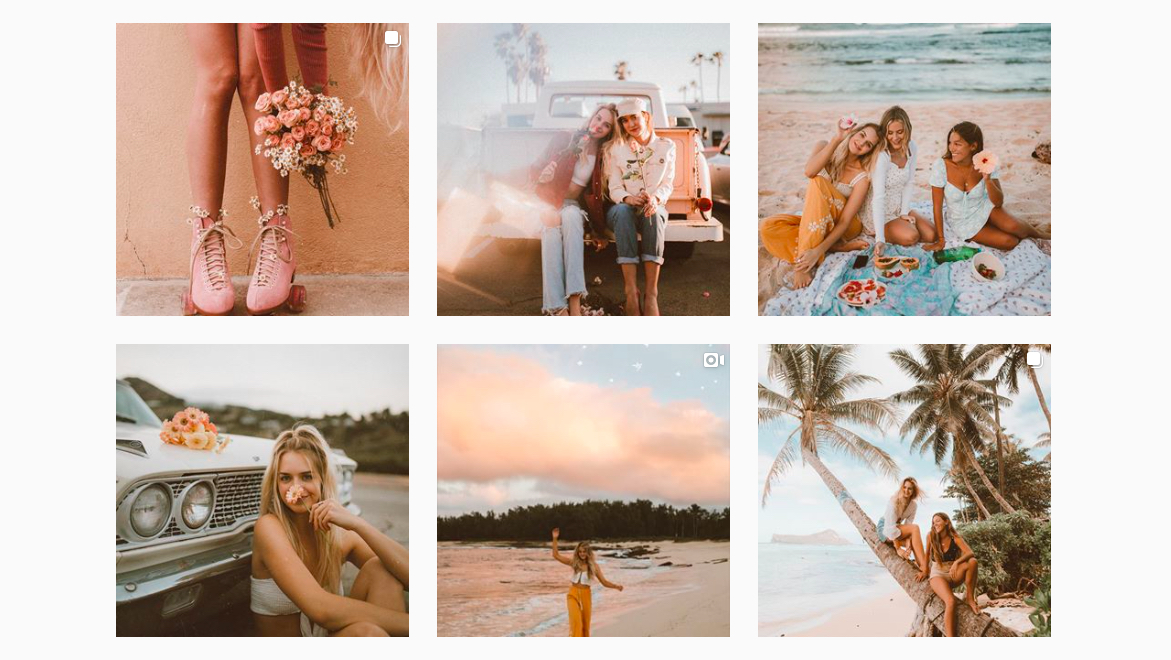
What their typical work day looks like
Most of the time, companies contact these influencers through email or direct message on Instagram, asking if they would be interested in promoting their products. But sometimes the influencers are the ones reaching out to their favorite brands.
“Usually if I see another influencer promoting something I like, I reach out to the company about promoting the same piece on my page,” Rosenbaum said. “When I know that I can get clothes for free, I always ask first.”
All four work with different brands. Brady promotes brands in her videos and the other three all model products. Boudames has worked with over 100 brands, mainly advertising clothing.
Edmondson said her everyday work is mainly responding to emails and making ‘mood boards’ that include a list of elements she needs in order to execute her vision for a shot. Usually she has friends take her photos but sometimes she plans weekend trips with other influencers and they swap photography and modeling skills. Edmondson puts significant effort into her content creation but rejects the stereotypes that come along with her occupation.
“I hate the term influencer,” Edmondson said. “I think it suggests that all I do is get people to consume things they don’t need or make them jealous of a life they don’t have but my purpose is rather to have a platform to inspire other people and be vulnerable and to emphasize that we are all human.”
Edmondson always edits her own photos and asks photographers to send her the unedited versions of her photos where she then spends anywhere from 40 minutes to an hour editing each one.
“It’s a lot of pressure to always be creating and always be inspiring,” Edmondson said.
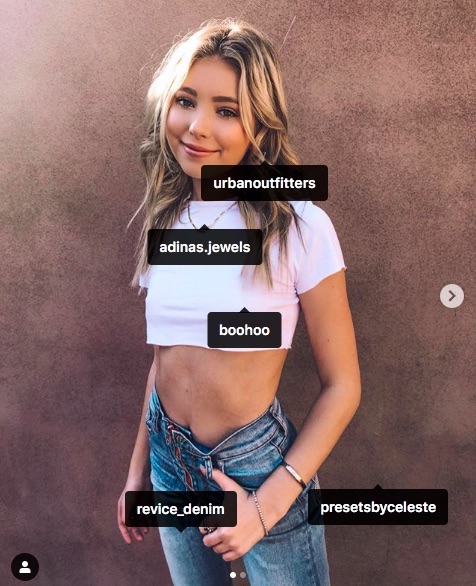
Rosenbaum posts a few times per week and plans it all out. Sometimes she has her friends take the photo she needs for her on campus in the Towers parking lot.
“I get ready and take about 500 pictures to get one good one, and then once I like one, I’ll go back inside and put on pajamas,” Rosenbaum said.
Boudames said sometimes the peak posting time conflicts with when she is in class. She has to sneakily post under her desk in order to reach the largest amount of people. Through much practice, she said she has trained her eye to see what looks good on her feed and has come to understand what her audience likes to see.
Brady balances her YouTube channel with a part-time job at the Starbucks on campus. On the mornings she doesn’t work, she wakes up early, does her makeup and gets dressed, sets up her camera and starts filming for 20 to 30 minutes. Her content can be described as storytelling or lifetyle vlogging with a comedic nature. Brady said editing takes between six and seven hours per video.
“At the end of the day, I’m just looking to entertain people,” Brady said.
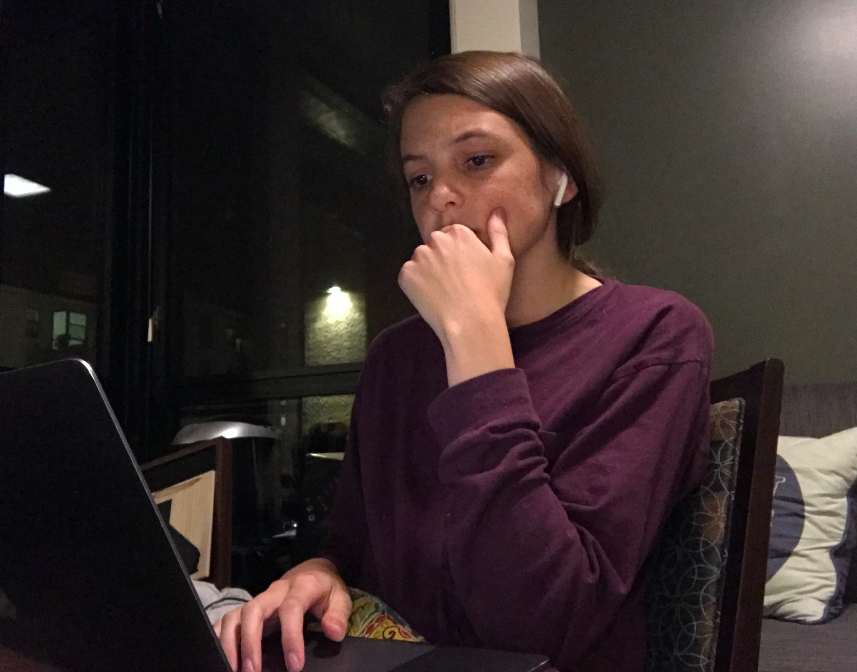
What they like most about influencing
With their audiences buying in both figuratively and literally, these Pepperdine influencers have successfully figured out how to obtain free clothing from their favorite brands, all-inclusive nights in hotels, free trips to Hawaii, teeth whitener kits and candy subscriptions.
These women are able to make a range of compensation for posting photos and tagging brands. Depending on the size of the company and what they are asking, the women said they have made anywhere from $50 for an Instagram story to over $1,000 for one post. On average, these influencers bring in around $200 for a post.
Considering all these perks, their favorite parts about influencing are not what one may think.
“It’s great to have a community of influencers who go through the same struggles as you who can understand what it’s like,” Edmondson said. “I have honestly made most of my best friends through Instagram.”
The women were quick to point out that social media communities are a complex and competitive space, yet also a welcoming, supportive circle that they are glad to be a part of.
“YouTube will always have a special place in my heart — it’s like a home for me,” Brady said.
Not only is the community aspect a big draw for these influencers but so is the idea that their peers value their opinions.
Rosenbaum said her favorite thing about influencing is learning how many people she actually persuades to take action just by her posting. The companies she works with sometimes tell her how many people actually chose to go out and buy the product after she posted.
“I look at the email and think, ‘Wow, 50 girls want the same shirt that I’m wearing,’” Rosenbaum said. “It makes me feel like a role model and like I am looked up to and respected.”
Boudames highlighted the professional advantages that come with being an influencer in the current occupational climate.
“Nowadays, it’s kind of crazy how important your Instagram is when applying for a job,” Boudames said. “The first thing they do is look you up, and having a big platform is a big bonus.”
Non-influencer perspective
The entrepreneurial world of social media that is enveloping young people everywhere has completely revamped the possibilities of making money while attending school as well as the level of trust an audience can have with someone they have never met.
Oh said social influencers’ large followings have only increased the pressure and desire for users to conform to the latest trends being flashed on their feeds.
“It is important for influencers to maintain a professional standard — that’s how they will continue to be successful,” Oh said. “They must think of themself as a public figure, which includes ethics, morals and values.”
Additionally, student influencers must be very careful to separate their personal lives from their influencing, Oh said. It’s easy for their social media lives to unhealthily dominate their day-to-day lives.
As one can imagine, being best friends with an influencer may look a little different.
“It’s like being friends with any other person, just with a lot more pictures,” said Julia Kraus, sophomore marketing major and Rosenbaum’s best friend. “They talk a lot about going to certain places to take pictures in whatever item they are influencing, and most times we hang out it involves taking some sort of photo and then doing something fun nearby after.”
New job positions are opening up with social media in the title and more companies are expecting new employees to have a social media presence, Amy Adams, executive director of the Career Center, said.
Adams, who follows some influencers herself, said social media is more targeted than television ads and has a greater possibility of success because the advertisements come from people the consumer already likes.
“It almost feels like a word of mouth recommendation from a friend,” Adams said.
Influencing permeates every part of American society: politics, business, consumer products, people’s lives, Adams said.
“People seek and are attracted to fame and popularity in a way that they always have been but now we have these larger stages and scales that people are drawn to,” Adams said. “I just hope as a society we aren’t forgoing the voices of value for the loudest voice or the most widely followed.”
The future of social media and influencing
It takes a lot of time and effort to grow a following, create a cohesive feed and increase Instagram engagement. Although these women are in the process of mastering the art of the current marketing powerhouse, all said this is most likely a temporary gig for them.
“I’m going to ride the influencer train for as long as I can but I know there will probably be an expiration date,” Edmondson said.
The influencers unanimously agreed that this advertising trend will not be going away any time soon but predicted that Instagram may not be the platform of choice five years from now. Just as advertising has evolved, so has the way younger generations are viewing the world.
Kids used to want to grow up to be astronauts, firefighters or ballerinas. YouTuber is in the top five dream jobs for children today, Oh said. They are growing up taking social media and online self-expression for granted, viewing it as a part of life rather than separately.
“Generation Z will think I am this kind of kid in school, I am this kind of daughter in my family, I am this kind of friend, I am this kind of athlete but also I am this kind of Instagram account,” Oh said.
Abby Hunt completed the reporting for this story under the supervision of Dr. Christina Littlefield and Dr. Theresa de los Santos in Jour 241 in Spring 2019. Dr. Littlefield supervised the web story. Dr. de los Santos supervised the video package.

